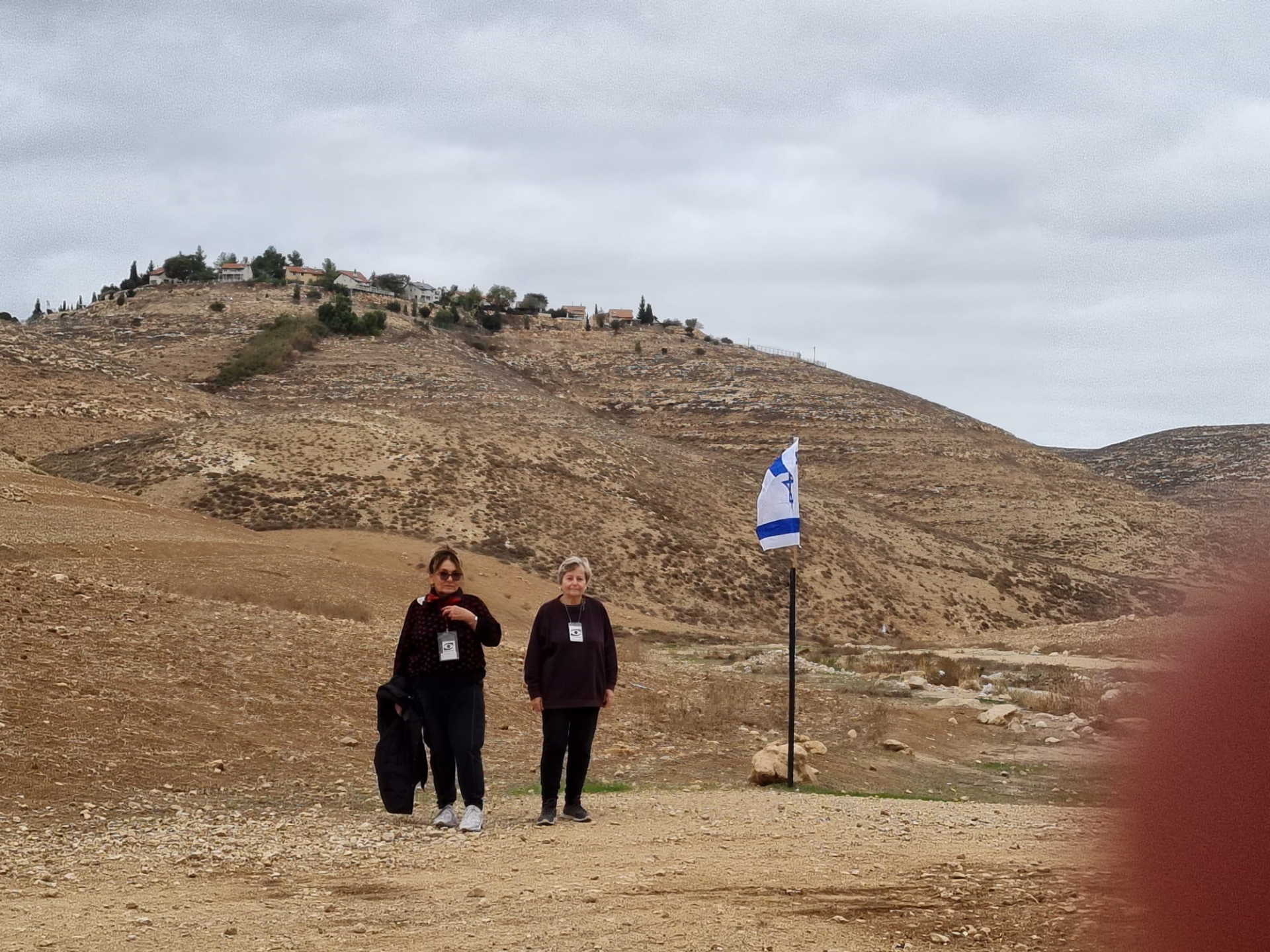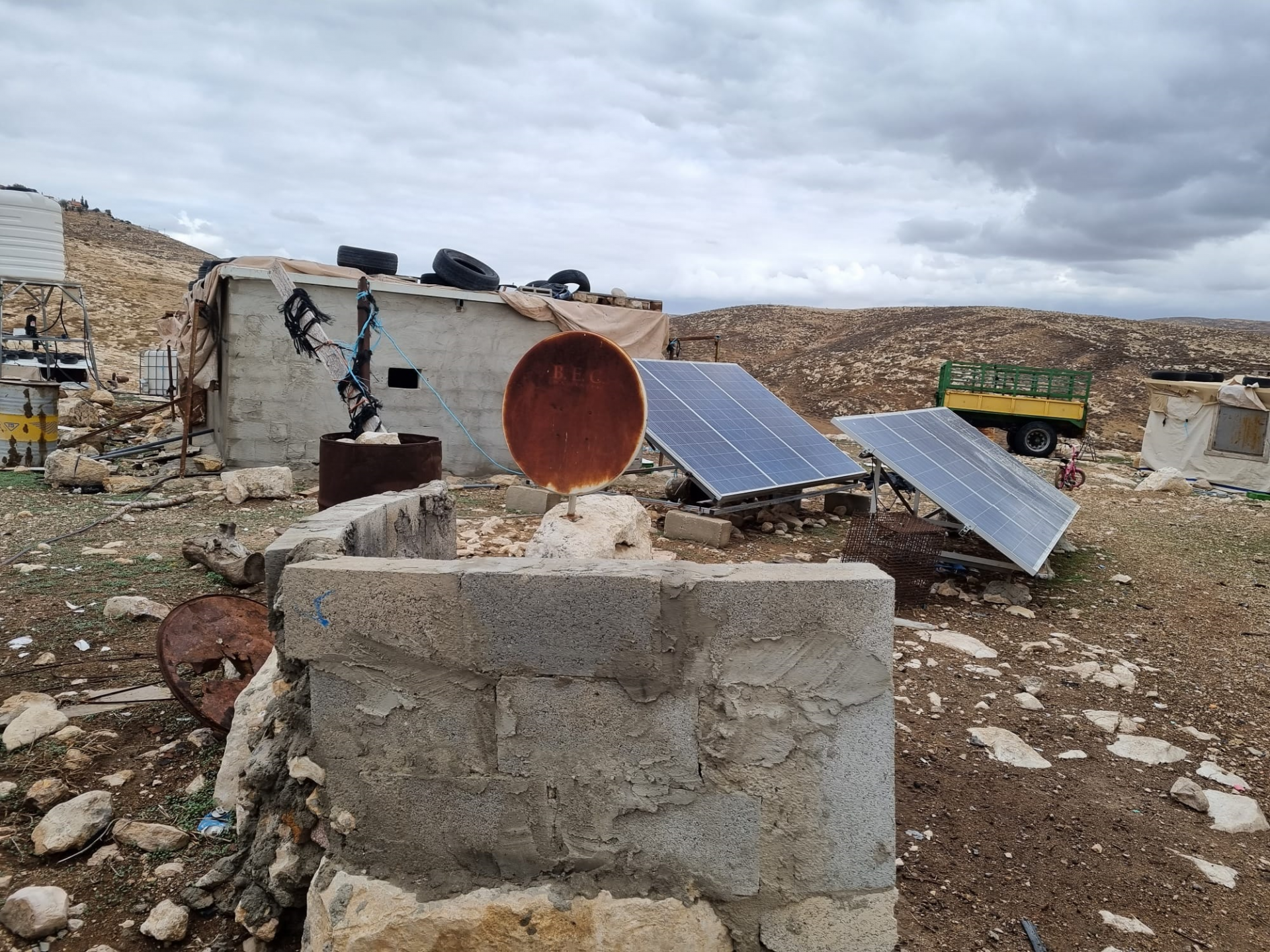Visiting Rahwe, South Hebron Hills
On the advice of our Muhammad, we went to an area which we have not yet visited and explored.
Route 325, the road leading to the settlement of Tene Omarim, which is located a few kilometres from the Meitar checkpoint. The settlement was established in 1983, and has about 1000 residents.
A little before Tene Omarim is the village of Rahwe and we turn right on road 325 even before the entrance to Tene Omarim. Already at the entrance to the dirt road, the Israeli flag was on a pole, as we document in all the reports from now on. This is since October 7, 2023.
We are greeted by Majdi Altake. After introducing ourselves and MachsomWatch, Majdi welcomes us. He comes out of a small one-room building, where he gives a zoom lesson to his students in Hebron. Due to access and the closure , he cannot get to Hebron. He now has no salary, and normally, before the war, he earned about 70% of what his salary should be. The Palestinian Authority has no budget.
, he cannot get to Hebron. He now has no salary, and normally, before the war, he earned about 70% of what his salary should be. The Palestinian Authority has no budget.
The village has 35 families, most of them work in Dahariya and its surroundings. The village is at the foot of the settlement, Tene Omarim. To our question whether there is violence and harassment from the residents of Tene Omarim, he says unequivocally that there is not and there has not been any.
The army patrols the area, but does not take any actions.
Not far from there, north of the village, there are 2 farms that we see from highway 60. The Mor farm and the Avraham farm. Settlers from the farms forbid the shepherds of the village from reaching the grazing area at the foot of Tene Omarim, and they are forced to turn in the opposite direction. They have no choice. In a small room is his sister-in-law with her 2 young children and Majdi's baby . We gave them games and clothes, and they were very happy.
. We gave them games and clothes, and they were very happy.
We continue to meet the flags along the dirt road as we will continue to another family according to Majdi's guidance. We continue along the Hebron stream (which more resembles a sewage canal) north, about a kilometre, to the Abu Sharah family. This little village is also called Rahwe.
Here we were already welcomed by the entire extended family in Shig (the place where the family gathers and receives guests). The parents and their adult and younger children. Six families live there.
One of the sons is married to an Israeli Bedouin, a resident of the Sayed tribe of Hura, and she makes the conversation very easy as she speaks Hebrew. They make a living mainly from the milk produced from their herd of sheep. Here, too, every few meters there is a pole with the Israeli flag, to mark who owns the place.
The two farms that Majdi mentioned, east of Tene Omarim, are very close to the Abu Sharah territory, and they are the ones who put up the flags, and do not allow them to come with the flock to graze as they wish. A week ago, settlers cut the water pipe and now they have to use the wells they have nearby. At night they do not move from the place for fear that the settlers will invade their territory. Some of them have houses in Dahariya, but it is difficult to pass through the nearby checkpoint, so they rarely go there.
The children sometimes study in Zoom, because of difficulties of reaching the school.
They also note the increase in difficulties and harassment since October 7th.
What is clear, black on white, is that on the pretext that these are state lands, the settlers received thousands of dunams to take over the area. A well-known fact.


